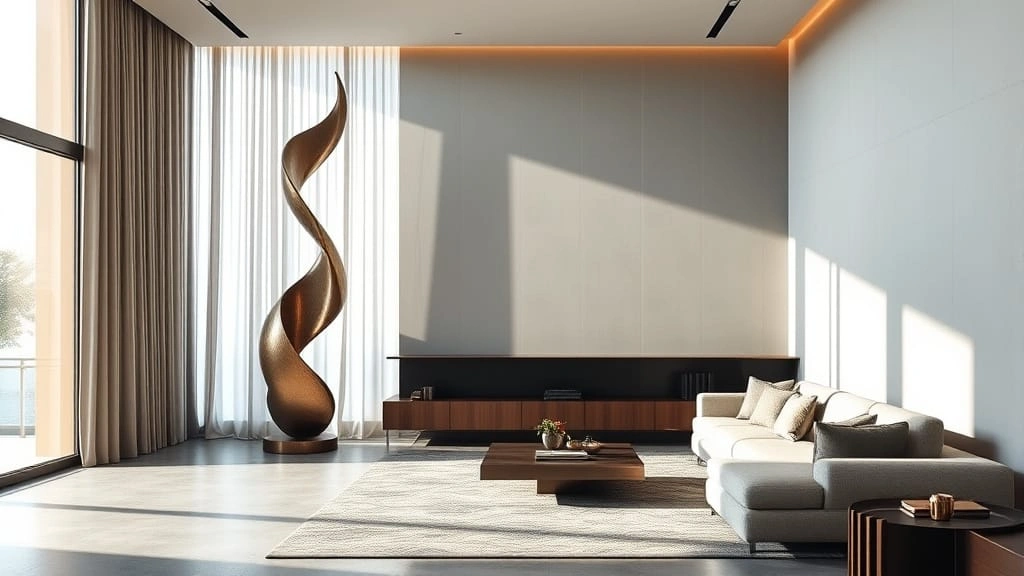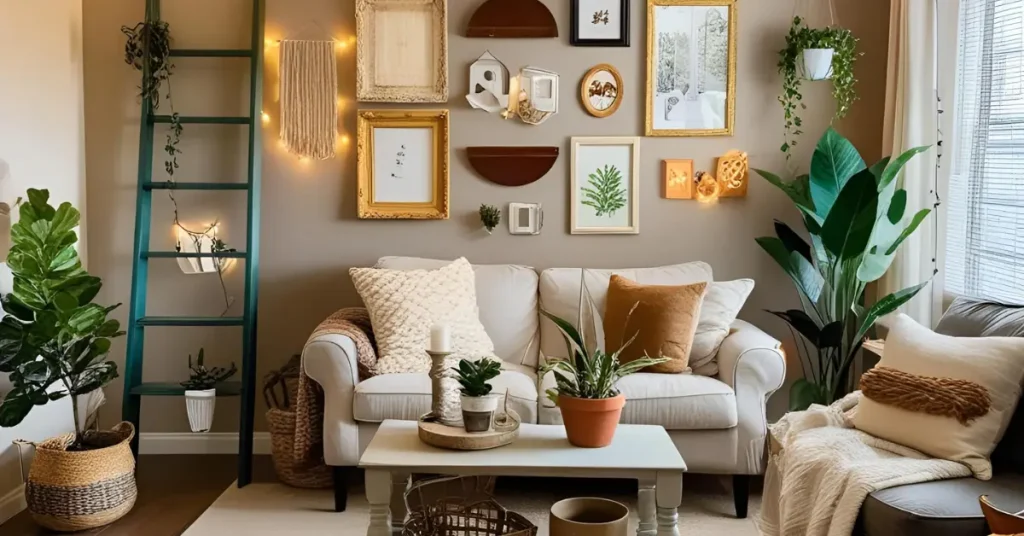I used to feel like my living room had no spark. It looked nice but didn’t feel alive. That changed the day I added a large sculpture for home decor. Just one piece gave the whole space a bold, fresh feel. Since then, I’ve tried tall floor sculptures, home decor statues, and even small figurine sculptures in different rooms. In this guide, I’ll share what worked for me—and what didn’t. If you want to give your space new life, let’s get started.
Table of Contents
Large Sculptures for Home Decor: How I Transformed My Space with Statement Pieces
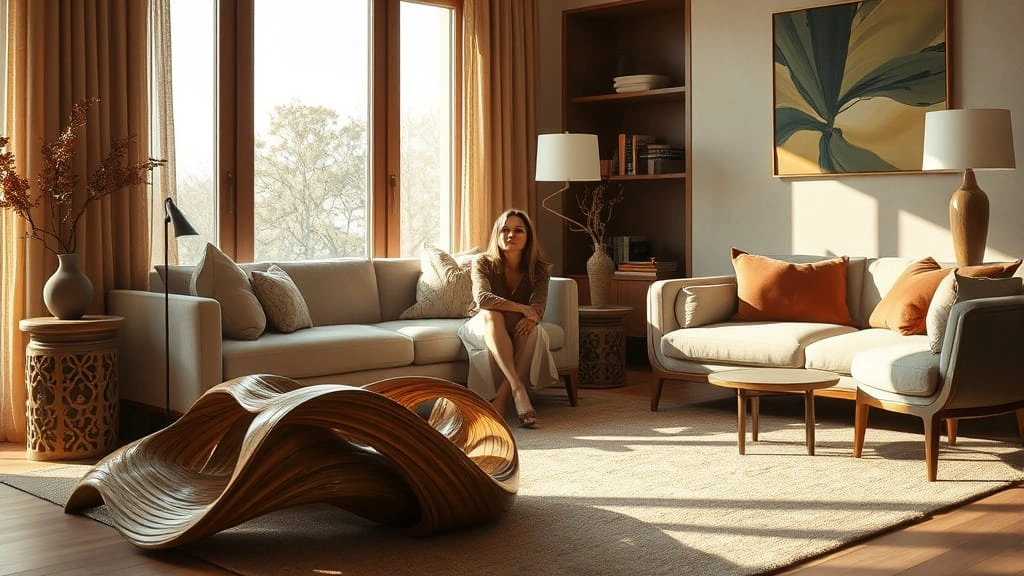
When I first brought home a large sculpture for home decor, I had no idea how much it would change my space—and honestly, my mindset. I placed it near the window in my living room, and it instantly became the star of the room. It wasn’t just decor. It was a piece of art that spoke to who I am.
The shift was real. That tall piece didn’t just fill space—it filled a gap I didn’t know was there. It added height, shape, and soul. Over time, I added more: a bold home decor statue by the front door, a soft figurine sculpture in the hallway, even a few living room statues to spark conversation when guests dropped by.
The trick? Start small but think big. I learned to look at my home like a gallery—each piece should tell a story. And once I saw sculptures this way, choosing them became fun, not stressful. The right one doesn’t just fit your space—it fits you.
Why Choose Large Sculptures for Home Decor?
Large sculptures make a big impact because they change how a space feels, not just how it looks. When you walk into a room with a tall piece of art, your eye goes straight to it. It draws attention and adds drama in a way small decor just can’t. The scale gives life to empty corners and fills space without clutter.
Oversized sculptures add depth, height, and balance to a room. Think of them like visual anchors. Whether it’s a sleek metal piece or a textured stone design, they help break up flat walls and bring movement to your space. They’re bold, but also grounding—like furniture that speaks.
I still remember my first tall floor sculpture for home. I spotted it in a small artisan shop. It was a twisted wood form—simple, tall, and full of character. I didn’t even plan to buy it, but I couldn’t stop thinking about it. I brought it home, placed it by the entryway, and suddenly the whole space felt pulled together. It made my home feel more “me.”
Types of Large Sculptures That Work for Any Home
Tall Floor Sculptures for Home
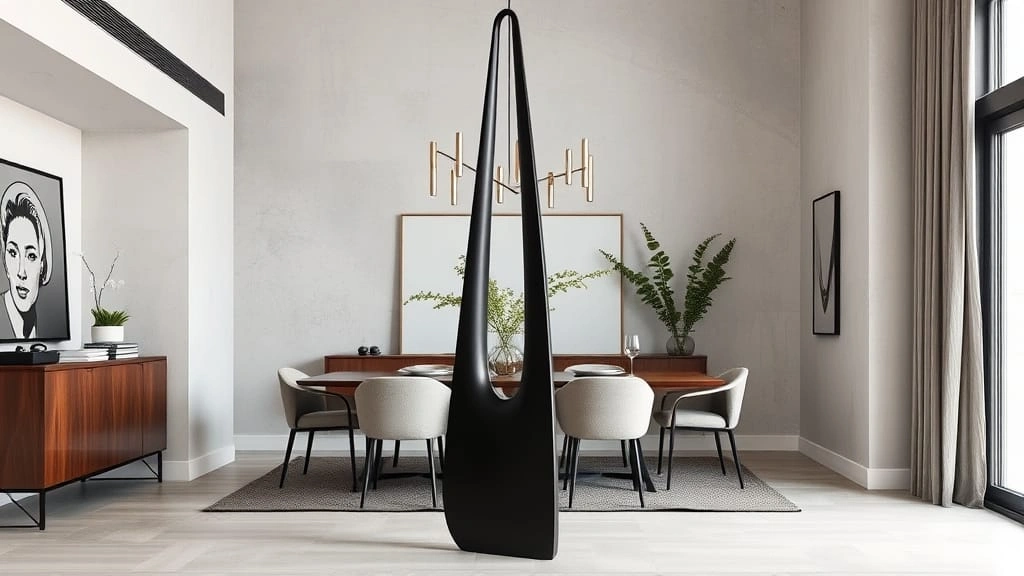
Tall floor sculptures are perfect for filling vertical space and making a room feel taller and more complete. You can place them in corners, by the entryway, or even behind a sofa to create depth. I have one in the corner of my dining area, and it pulls the whole room together without saying a word.
Materials like metal, resin, wood, and stone each bring their own vibe. Metal feels modern and bold, while carved wood gives warmth and texture. I once bought a stone piece that felt too heavy—literally and visually—so now I balance style with weight and how easy it is to move.
Here’s my tip: match the sculpture’s height with your ceiling. If you have tall ceilings, go bold with height. If not, choose a piece with vertical lines but a smaller footprint. I learned this after buying one that felt perfect in the store but overwhelmed my apartment once I got it home.
Home Decor Statues vs Figurine Sculptures
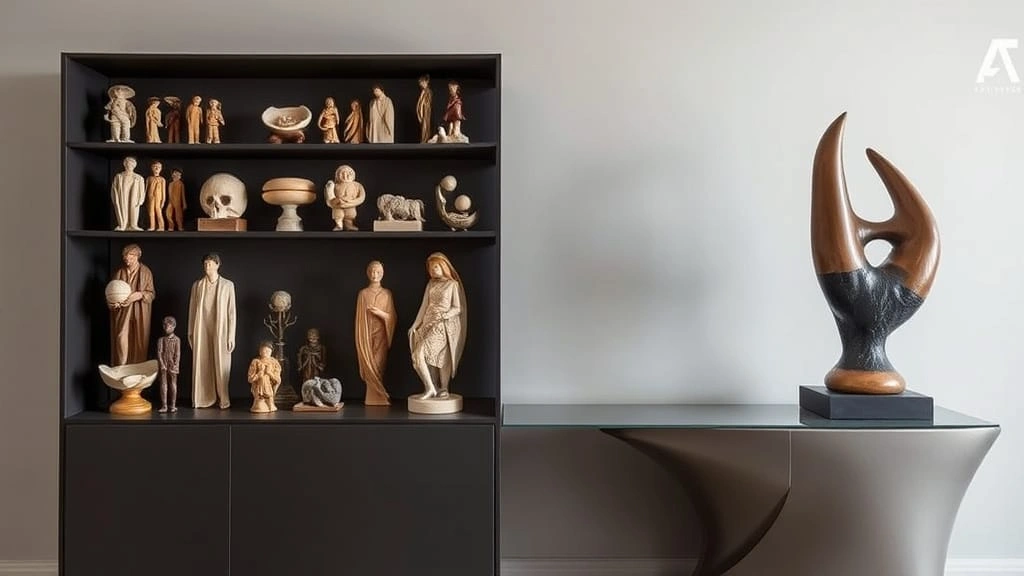
Statues and figurines both fall under sculpture, but they serve different purposes in decor. A home decor statue is usually larger and makes a strong visual statement. Figurines are smaller, more detailed, and work great on shelves or tabletops.
Go for a bold statue when you want one piece to carry the room’s vibe. Figurines are better when you want layers, like adding characters to a bookshelf or side table. I love mixing both—it’s like pairing a statement coat with detailed accessories.
I usually place a statue in one key area, then echo the mood with figurines around it. It keeps things connected without being too “matchy.” The contrast makes the whole space feel thoughtful and curated.
Living Room Statues That Wow
The right living room statue can spark conversation and instantly elevate the space. People always ask about mine, especially when it’s something abstract or unexpected. It becomes more than decor—it becomes a talking point.
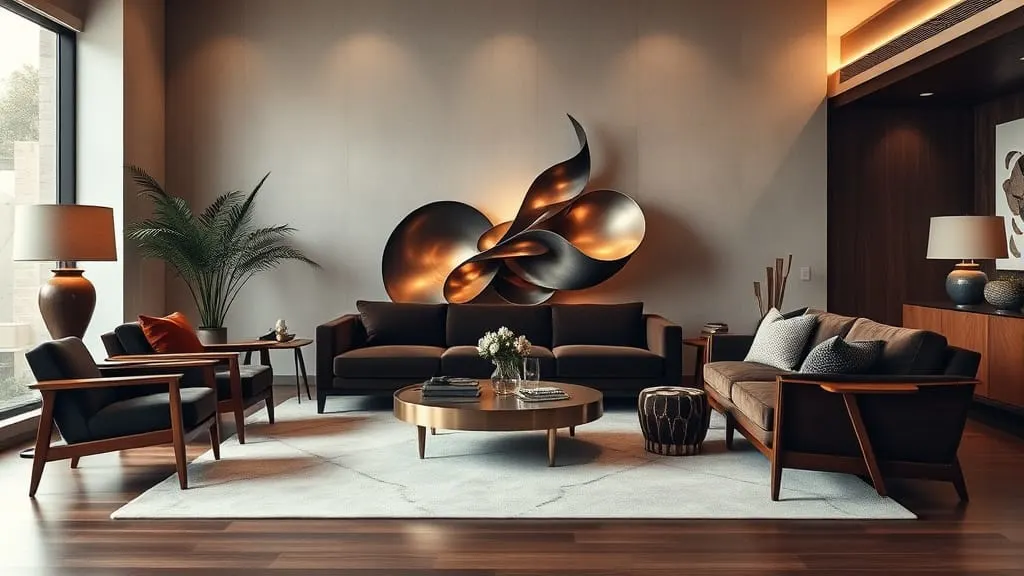
Modern, abstract, and classical styles each bring a unique energy. For example, modern sculptures with clean lines feel sleek and minimal. Abstract ones are emotional and creative. Classical ones add elegance and tradition. Choose the style that fits your personality.
In my modern living room, I went with an abstract metal piece with smooth curves. It catches the light during the day and creates shadows at night. It’s not just decoration—it’s presence.
Where to Place Large Sculptures in Your Home
Living Room: Focal Points and Complementary Decor
The living room is one of the best places to showcase a large sculpture—it instantly sets the mood. I like placing mine where it naturally draws the eye, like beside the sofa or near the window. It acts like a visual anchor, grounding the room and adding personality at the same time.
Think of your sculpture as part of the furniture—not just decor. It should complement your seating, lighting, and color scheme. One of my favorite setups was a tall, abstract metal piece that stood behind my accent chair. It looked like it belonged there, like it was always meant to be part of the conversation.
Pro tip: use lighting to make it pop. A spotlight or nearby lamp can highlight texture and shadow, turning your sculpture into art that moves with the light.
Hallways and Nooks: Unexpected Artistic Moments
Hallways and quiet corners are perfect spots for a surprise sculpture moment. These are the in-between places that often get ignored—but with the right piece, they become tiny art galleries. I placed a slim wood sculpture at the end of a hallway once, and guests stopped just to admire it.
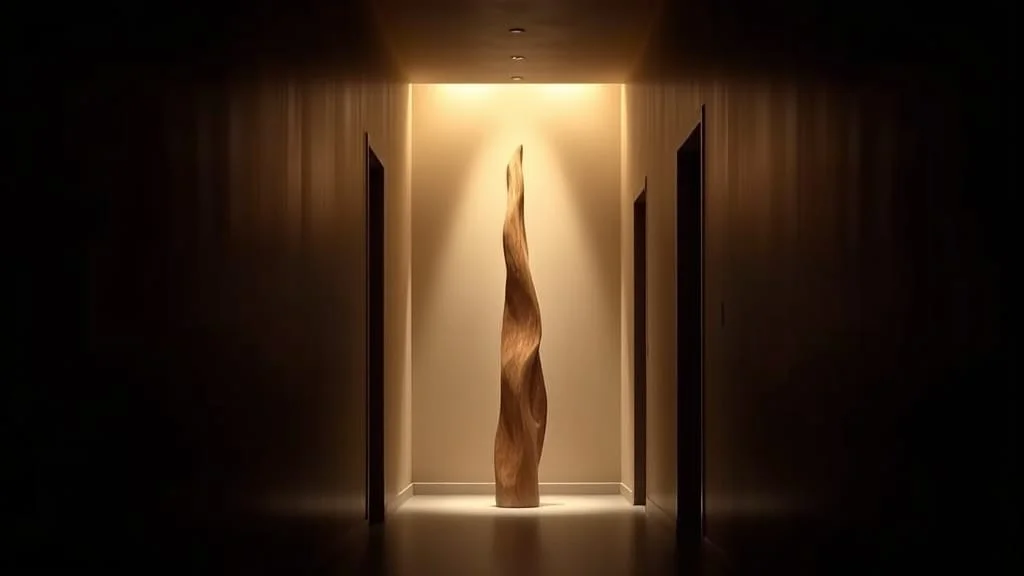
Smaller footprints work better in these spaces, but the impact can still be big. Choose something tall and narrow, or something with strong vertical lines to lead the eye through the space. It’s all about adding interest without clutter.
A sculpture in a nook or corner tells visitors, “Every part of this home matters.” And it reminds you to pause and enjoy the beauty, even in the everyday walk from room to room.
Outdoors: Using Weather-Resistant Statue Home Decor
Don’t forget about your outdoor spaces—sculptures can thrive there, too. Whether it’s your balcony, garden, or front porch, the right weather-resistant statue can add life and charm. I once added a stone Buddha statue to my small patio, and it turned the space into a calm retreat.

Look for materials like stone, treated metal, concrete, or resin designed for outdoor use. These won’t crack, fade, or fall apart when the weather changes. Just check that the base is stable—especially in windy areas. Adding a sculpture outdoors connects your interior style with the outside world. It’s like your home keeps telling its story, even after you step outside.
My Tips for Selecting the Perfect Sculpture
The best sculpture isn’t just beautiful—it fits your space and your lifestyle. That’s something I learned after a few hits and a couple of misses. Here are my top tips to help you pick the right piece without second-guessing every step.
Match with Existing Decor Themes and Color Palette
Start with your room’s vibe. Is it cozy and warm? Modern and sleek? Eclectic and colorful? Your sculpture should echo that tone, not fight against it. For example, in my boho-inspired bedroom, a light wood figurine with soft curves felt like it belonged. But in my living room—mostly black, white, and chrome—I went with a bold metal piece that popped but still made sense.
Choose a sculpture in a color already found in your space—like your rug, cushions, or wall art. It ties everything together without trying too hard.
Trust your gut here. If something feels off, it probably is. A sculpture shouldn’t just match the style; it should feel like a natural extension of the room’s personality—and yours.
Consider Material Durability and Maintenance
Looks matter—but so does longevity. Some sculptures need more care than others. My first resin piece looked amazing, but it scratched easily and faded over time near a sunny window. Since then, I always check how a piece will hold up—especially if it’s in a high-traffic spot.
The best material depends on where you’ll place the sculpture and how much wear it might face. For example, go for stone or metal in busy rooms or outdoors. Resin and wood are great for cozy, low-traffic areas.
If you have pets, kids, or a cleaning routine that involves moving things around, think about weight too. I once bought a gorgeous marble piece I loved—until I had to move it for vacuuming. Heavy can be high-maintenance.
Sourcing Sculptures: Online vs Local Artisan Shops
Both have perks—here’s how I decide. When I want something unique and full of character, I visit local shops and markets. There’s something about seeing a piece in person—touching it, walking around it, feeling its energy—that online photos just can’t match. My favorite wooden sculpture came from a weekend market. I met the artist, heard the story behind it, and it just felt right.
But I’ve also had great luck online. If you’re hunting for variety or specific styles, online shops can be a goldmine. Just be sure to check the dimensions (I’ve misjudged that before!) and read reviews about quality and materials.
If you’re shopping online, always check return policies, real customer photos, and product weight to avoid surprises. When in doubt, start small. Try a mid-sized piece from a trusted site, or visit a gallery to explore your taste. Let your instincts and the room guide you—not just the trends.
Common Mistakes to Avoid
Overcrowding a space with multiple large pieces

One big sculpture can add life to a room—but too many can make it feel cramped. I learned this the hard way. I once got excited during a sale and bought three large sculptures in one go. I placed them all in my living room, thinking they’d create an art-gallery feel. Instead, it felt like the sculptures were competing for attention—and I couldn’t relax.
If you’re decorating with large sculptures for home decor, less really is more. Pick one or two statement pieces per room. Let them breathe. Give them space to shine. Your room will feel more balanced, and each piece will actually stand out more. Think of a sculpture like a solo singer. It needs a quiet stage, not a noisy crowd.
Ignoring scale and proportion
The right sculpture should fit your room—not fight with it. One of my earliest mistakes was buying a tall floor sculpture that looked perfect in the store. But when I brought it home to my small apartment, it felt like a giant in a dollhouse. It overpowered everything—even my sofa.
Here’s the fix: pay attention to ceiling height, furniture size, and open space. A piece that looks balanced in a big showroom may feel overwhelming in a smaller home. For low ceilings, try narrow pieces with vertical lines. For larger rooms, go bold with wider or taller designs. Matching your sculpture’s size to your room’s scale keeps your decor looking polished and intentional.
Not anchoring the piece with proper lighting or furniture
A sculpture without the right spotlight can feel lost—even if it’s beautiful. I once placed a stunning wood statue in a dark corner and wondered why no one noticed it. The truth? It just blended into the background.
Now I always pair my large sculptures with lighting or furniture that frames them. A nearby floor lamp, a console table, or even a spotlight can make all the difference. It’s like giving your sculpture a stage to perform on. Light adds drama. Anchoring with furniture adds purpose. Together, they make your sculpture feel like a part of the story—not just a random object.
By avoiding these common mistakes, your sculptures won’t just fill space—they’ll elevate it. Think balance, not bulk. Focus on flow, not just looks. The best sculptures feel like they were always meant to be there.
How Large Sculptures Changed My Perspective on Home Decor
Before I added my first sculpture, I thought my home looked fine. It had nice furniture, good lighting, and a few prints on the wall. But it still felt… flat. Like a stage without a star. Adding one large sculpture changed everything. Suddenly, my living room had energy. It felt like me. A single bold sculpture can shift a space from “put-together” to “personal and alive.”
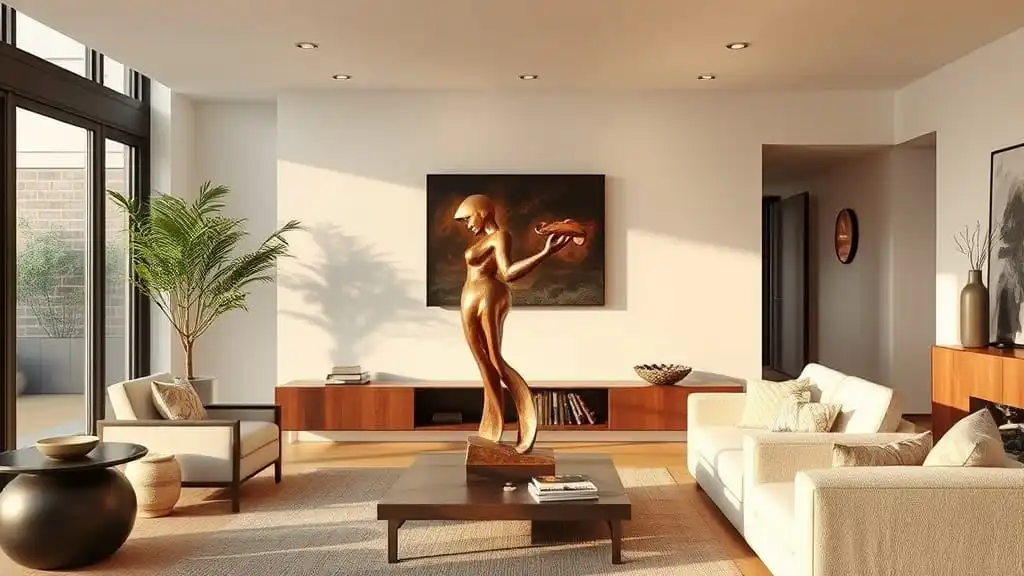
What surprised me most was how much a piece of art could affect my mood. When I walk past a sculpture I love, it gives me a little lift—like music for the eyes. Some days, it makes me pause. Other days, it feels like a silent companion. Art doesn’t just sit there; it speaks. Sculptures affect how a space feels, not just how it looks—adding warmth, meaning, and depth.
Over time, I started to see sculptures as more than decor. They became a way to express who I am without saying a word. A curve in wood, a twist in metal—it all tells a story. And that story changes depending on who sees it. That’s the magic. Sculptures let you express your personality visually—every piece tells a story that speaks differently to everyone.
Q. Where should I place a large sculpture in my home?
Place large sculptures in corners, by windows, near sofas, or in entryways to highlight the space and create balance and flow.
Q. Do sculptures match all home styles?
Yes, sculptures come in many styles—modern, classic, abstract, or rustic—so you can find one that fits your taste and home theme.
Q. Where can I buy large sculptures for home decor?
You can shop online for a wide selection or visit local artisan shops for unique, handmade pieces with character and personal stories.
If you’re just getting started, here’s my best advice: don’t overthink it. Begin with one bold piece. Place it somewhere it can breathe. Let it teach you what you like. You’ll be surprised how it changes the way you see your home—and yourself. Start with one piece you love—let it guide your style and shape your space naturally. In the end, large sculptures didn’t just transform my rooms—they changed how I feel at home. They brought souls into space. And now, every time I walk in, I smile. That’s what art should do.

